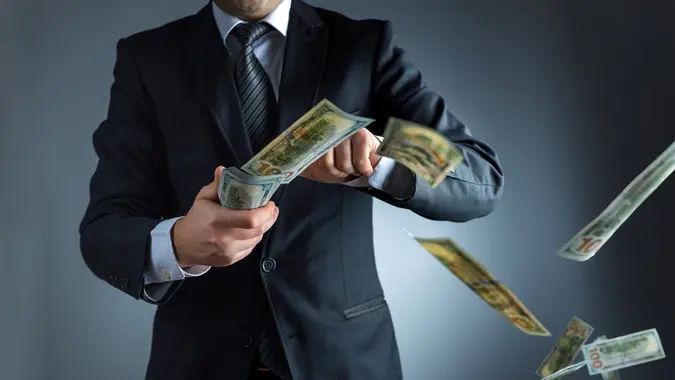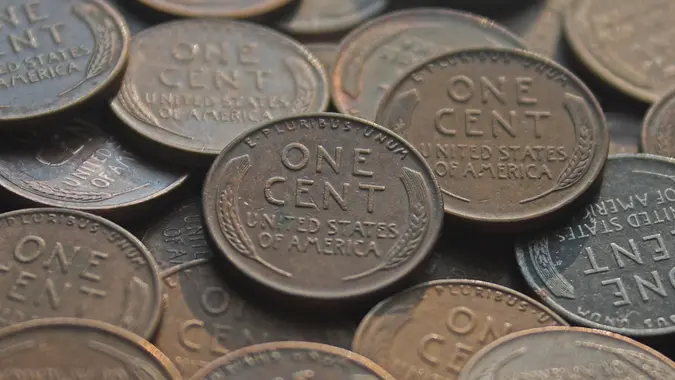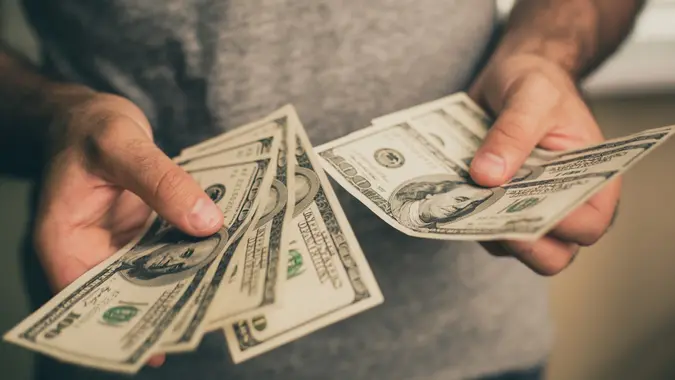Do You Own a $10 Bill Worth $70,500?

Commitment to Our Readers
GOBankingRates' editorial team is committed to bringing you unbiased reviews and information. We use data-driven methodologies to evaluate financial products and services - our reviews and ratings are not influenced by advertisers. You can read more about our editorial guidelines and our products and services review methodology.

20 Years
Helping You Live Richer

Reviewed
by Experts

Trusted by
Millions of Readers
There’s no one out there who doesn’t love having some extra money. It’s great for emergencies or to spend on something indulgent. When you open your wallet to a sea of currency and bills, it’s reassuring to know how much power comes with them.
But what if there was even more to your money than you realized? Over the course of history, some types of money have actually increased in value from the time they were made and released. More and more of us are finding rare coins everywhere we look and figuring out ways to cash in on those fun and lucrative discoveries.
The Pricey $10
This evaluation of older money goes beyond just nickels and dimes, though. Next time you open your wallet or purse, check to see if there is a $10 bill in there. You might be in possession of one worth $70,500. This is the hard-to-find yet very sought-after 1933 $10 silver certificate bill.
“A 1933 $10 silver certificate bill might be called the holy grail for some collectors,” said Andrew Adamo, the vice president and co-founder of Bullion Shark, a family-owned precious metals and rare coin dealer.
“A very few of these certificates were printed by the United States Treasury but were never put into circulation and most were destroyed after President Franklin D. Roosevelt issued an Executive [order] in 1933 making it illegal for private citizens to own gold coins, bullion or certificates,” Adamo said.
Collectors in the field have given this bill the nickname “The King of Silvers.” Since they were made in 1933, only 156,000 were released to the public out of 216,00 produced. Because 1933 $10 silver certificate bills have a “one-year type” status and only a few remain in existence, their value has only gone up in the years as they are incredibly difficult to come across.
“It is possible that some of the $10 silver certificates may have made their way into the hands of private collectors,” Adamo said. “The U.S. Secret Service opened an investigation in 1944 and recovered most of these silver certificates. Though these certificates are illegal to own, there is a possibility that a few are still in private hands.”
The 1933 $10 silver certificate bills that have been found in fairly good condition have gone for $5,200 in the past. However, the finest “King of Silver” grades can sell on the buyer’s market for up to $70,500.
What To Look For
How can you tell if you have an authentic $10 bill that fits, well, this very specific bill?
“The silver certificate bears Andrew Hamilton’s face and displays the Silver Certificate across the top,” Adamo said. “The date of 1933 will appear in the lower left corner of the certificate. There will also be a banner that says Payable in Silver Coin to Bearer on Demand in the lower center of the bill unlike other silver bills that say in Silver Payable to the Bearer on Demand.”
Adamo stresses the importance of having “any of these bills authenticated by a numismatist or other currency grading service.”
Other qualifying criteria includes the signature combination of both W.A. Julian and W.H. Woodin. The serial numbers are always in blue ink, making them stand out next to the large seal reading “TEN” on the bill’s right-hand side. If you see all of these factors in one place, you might have gone from a bill that was worth ten dollars into a piece of money worth thousands of dollars.
“Today, only about 80 examples are known,” said Professional Numismatists Guild board of directors member and paper money expert Dustin Johnston. “This number would be much lower were it not for the efforts of George Blake and Colonel E.H.R Green (son of Hetty Green), to collect the low serial numbered notes from the issue. At public auction, the Series 1933 $10s sell for $5,000 to over $100,000, depending on condition.”
More From GOBankingRates
Photo disclaimer: Please note photo is for representational purposes only.
 Written by
Written by  Edited by
Edited by 

























